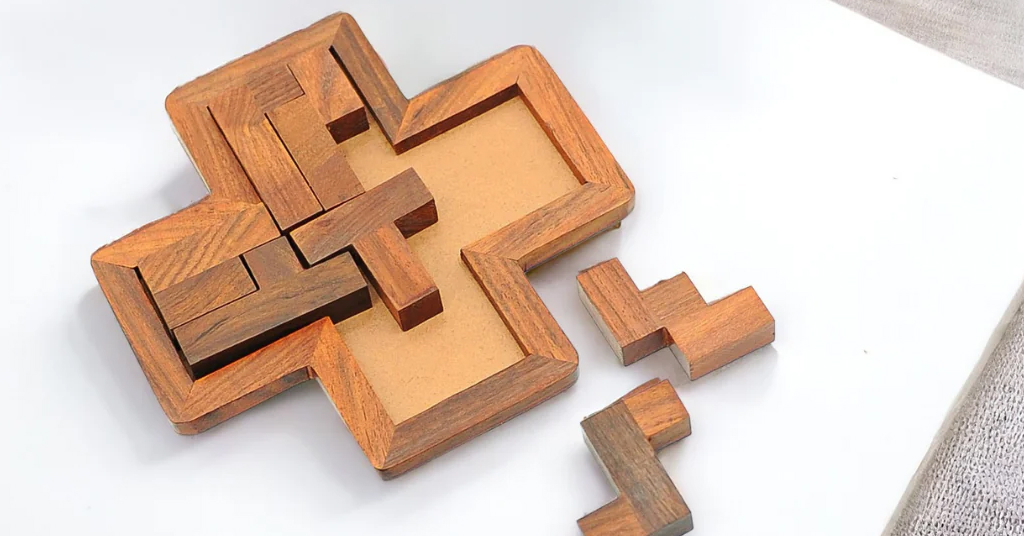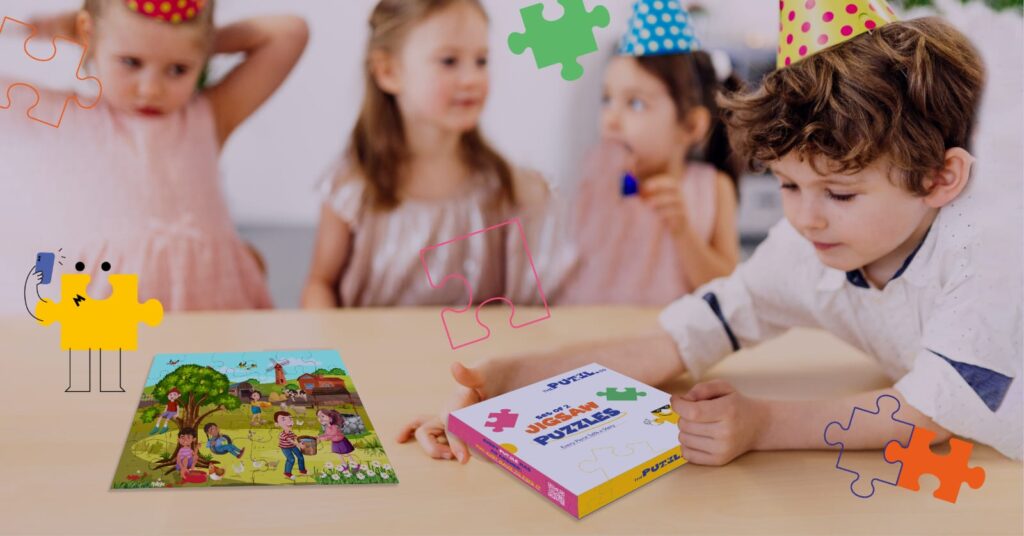Pentomino puzzles are fascinating brain teasers that challenge your spatial reasoning and problem-solving skills. Made up of 12 unique shapes, each consisting of five squares connected edge-to-edge, pentomino puzzles require you to fit all the pieces into a designated area without overlapping. Whether you’re new to pentominoes or looking to improve your solving technique, this guide will walk you through the process step by step.
Also Read: How to Solve Jigsaw Puzzle
Understand the Pentomino Pieces
Pentominoes are named after the letters they resemble: F, I, L, N, P, T, U, V, W, X, Y, and Z. Each piece is made up of five connected squares, and they come in various shapes and orientations. Some can be rotated or flipped to fit into different positions, while others have more limited placement options. Familiarizing yourself with each piece’s shape and possible orientations is the first step to mastering the puzzle.
Choose the Puzzle Grid
Pentomino puzzles can be solved on various grid sizes, with the most common being a 6×10 rectangle, 5×12 rectangle, or a 7×7 square with one square missing. The grid size determines the difficulty of the puzzle. Beginners may want to start with a 6×10 grid, as it’s one of the more straightforward options. The goal is to fill the entire grid using all 12 pentomino pieces without any gaps.
Sort and Identify Key Pieces
Start by sorting the pieces and identifying key shapes that are more challenging to place due to their complexity or symmetry. For example, the X piece is often difficult to position because of its symmetrical shape and limited fitting options. Similarly, the I piece, which is a straight line, usually fits in longer, narrower sections of the grid. Setting aside these key pieces early will help you plan your strategy more effectively.
Begin with the Corners and Edges
Just like in a jigsaw puzzle, starting with the corners and edges can provide a solid foundation for solving the pentomino puzzle. Place pieces that have straight edges or can be easily aligned with the corners. For example, the I, L, or U pieces often work well along the borders of the grid. Filling in the outer edges first helps contain the puzzle and makes it easier to fit the remaining pieces.
Fit the Central Area
Once the edges are in place, focus on filling the central area of the grid. This is where the puzzle becomes more challenging, as you need to ensure that all pieces fit together without leaving gaps. Look for ways to combine pieces that complement each other’s shapes, such as fitting the F and Z pieces together, as their curves and angles can often interlock nicely.
Rotate and Flip Pieces
If you find yourself stuck, remember that pentomino pieces can be rotated and flipped to fit into different positions. Don’t hesitate to try multiple orientations for each piece. Sometimes, a piece that doesn’t seem to fit in one orientation will slide perfectly into place when rotated 90 degrees or flipped over. This trial-and-error approach is a key part of solving pentomino puzzles.
Consider Piece Symmetry
Pay attention to the symmetry of the pieces. Symmetrical pieces like the X, I, and T are often more difficult to place because they have fewer placement options. Asymmetrical pieces, on the other hand, offer more flexibility and can be used to fill awkward gaps. Balancing the use of symmetrical and asymmetrical pieces is crucial for successful puzzle solving.
Use Logical Deduction
As the puzzle progresses, use logical deduction to narrow down the placement of the remaining pieces. For instance, if a certain piece can only fit in one area of the grid, place it there and adjust the surrounding pieces accordingly. If you encounter a situation where no piece seems to fit, it might be necessary to backtrack and rearrange previously placed pieces to create more space.
Practice Patience and Persistence
Pentomino puzzles can be challenging, and it’s not uncommon to encounter roadblocks along the way. If you’re stuck, take a break and return to the puzzle with a fresh perspective. Sometimes, simply looking at the puzzle from a different angle can reveal a solution you hadn’t noticed before. Persistence is key—every puzzle has a solution, and with practice, you’ll improve your ability to find it.
Solve Multiple Puzzles
The best way to become proficient at solving pentomino puzzles is through practice. Try solving different grid sizes and shapes to develop your spatial reasoning skills. Over time, you’ll start to recognize patterns and strategies that can be applied to a variety of puzzles.
Solving a pentomino puzzle is a rewarding exercise that challenges your mind and sharpens your problem-solving abilities. By understanding the pieces, choosing the right grid, and applying logical strategies, you can master the art of fitting these intriguing shapes into a cohesive whole. Whether you’re solving for fun or as a mental workout, pentomino puzzles offer endless possibilities for creative thinking and spatial reasoning.



